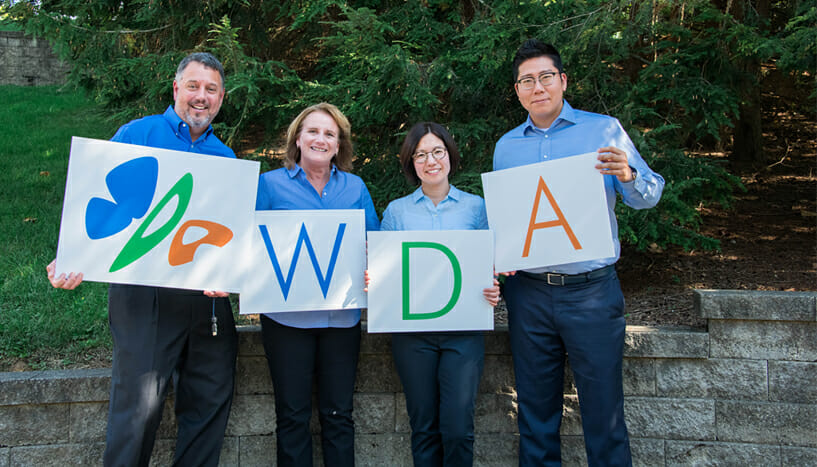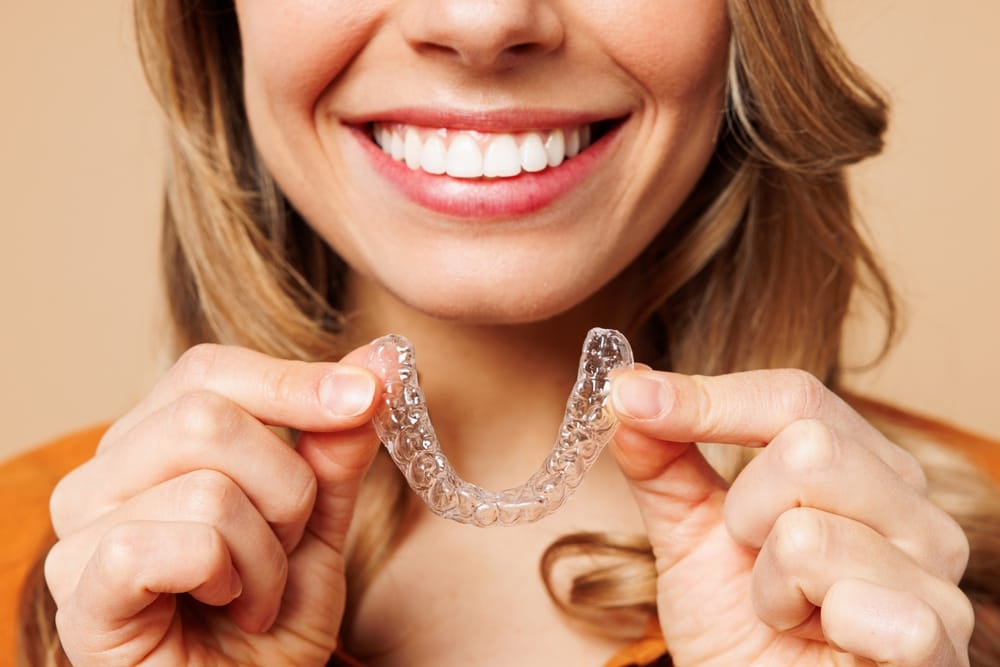
Having a dental emergency? Call us!
614-882-1135
We understand that dental emergencies can happen at any time. If you're in need of urgent care, give us a call, and we'll do everything we can to assist you when it matters most.
Patient Testimonials
Discover Better Dentistry
Become a part of the
Westerville Dental family!
We're accepting new patients. Our dental team prides itself on delivering a truly efficient and enjoyable experience while you’re with us.

Invisalign and traditional braces are two popular options for orthodontic treatment, aimed at straightening teeth and correcting dental issues. While both methods have the same goal, they differ in terms of their approach and features. Understanding the differences between Invisalign and traditional braces can help you make an informed decision about which option is best for you.
Invisalign is a modern orthodontic treatment that uses a series of clear aligners made of a flexible thermoplastic material called SmartTrack. These aligners are custom-made to fit snugly over your teeth and gradually move them into the desired position. Invisalign aligners are virtually invisible, making them a popular choice for individuals who want a more discreet treatment option. Additionally, the aligners can be easily removed for eating, brushing, and flossing, allowing for better oral hygiene compared to traditional braces.
On the other hand, traditional braces consist of metal brackets that are attached to the teeth and connected by wires. These braces apply constant pressure to the teeth, gradually moving them into the correct alignment. Traditional braces are typically more noticeable than Invisalign aligners and cannot be removed until the treatment is complete.
Key Differences Between Invisalign and Traditional Braces
One of the key differences between Invisalign and traditional braces is the way in which they move the teeth. Invisalign uses a series of custom-made clear aligners to gradually shift the teeth into the desired position. Each aligner is worn for a specific period of time before being replaced with the next aligner in the series. This method allows for controlled and precise tooth movement.
On the other hand, traditional braces use metal brackets and wires to apply constant pressure to the teeth, gradually moving them into the correct alignment. The brackets are periodically adjusted by an orthodontist to ensure the teeth are moving in the desired direction.
Additionally, Invisalign aligners are removable, while traditional braces are fixed in place. This means that Invisalign aligners can be taken out for eating, brushing, and flossing, allowing for better oral hygiene compared to traditional braces.
How Invisalign Works
Invisalign works by using a series of custom-made clear aligners to gradually move the teeth into their desired position. Each aligner is worn for a specific period of time before being replaced with the next aligner in the series.
The process begins with a visit to an orthodontist, who will create a 3D image of your mouth and jaw. This image is used to develop a customized treatment plan, which includes the design of each aligner. The aligners are made using advanced align technology, ensuring a precise fit and optimal tooth movement.
Once you receive your aligners, you will wear them for 20 to 22 hours a day, removing them only for eating, brushing, and flossing. As you progress through the series of aligners, your teeth will gradually shift into their desired position. Regular check-ups with your orthodontist will be scheduled to monitor your progress and make any necessary adjustments to your treatment plan.
Advantages of Choosing Invisalign
- Invisibility: Invisalign aligners are virtually invisible, making them a more aesthetically appealing option compared to traditional braces.
- Removability: Invisalign aligners can be easily removed for eating, brushing, and flossing, allowing for better oral hygiene during treatment.
- Comfort: Invisalign aligners are made from a smooth and comfortable material, reducing the likelihood of mouth irritation.
- Treatment Times: In some cases, Invisalign treatment can be completed faster than traditional braces, depending on the complexity of the case.
- New Smile: Invisalign can help you achieve the straight smile you desire, boosting your confidence and improving your overall oral health.
Limitations and Considerations
While Invisalign offers many advantages, it may not be suitable for everyone. There are certain limitations and considerations to keep in mind when considering Invisalign treatment.
- Complex Issues: Invisalign may not be suitable for complex dental issues, such as severe misalignment or bite problems. Traditional braces may be a better option in these cases.
- Compliance: Invisalign aligners must be worn for 20 to 22 hours a day to achieve the desired results. If you are not diligent about wearing the aligners as instructed, the treatment may not be as effective.
- Orthodontist Recommendation: It is important to consult with an orthodontist to determine if Invisalign is the best treatment option for your specific needs.
Why Choose Traditional Braces?
- Effective Treatment: Traditional braces have a long-standing track record of successfully correcting various dental issues.
- Lingual Braces: Lingual braces are a type of traditional braces that are placed on the backside of the teeth, making them less visible.
- Clear Braces: Clear braces are another option within the realm of traditional braces, as they use tooth-colored or clear brackets and wires for a more discreet appearance.
Making the Right Choice for You
When deciding between Invisalign and traditional braces, it is important to consider your personal needs and the specific requirements of your orthodontic treatment. Factors to consider include the complexity of your dental issues, your aesthetic preferences,and your willingness to comply with the requirements of each treatment option. Consulting with an orthodontist will help you make an informed decision and determine which treatment option is best suited for your specific needs.
Reclaim Your Smile Today
In conclusion, whether you opt for Invisalign or traditional braces, the goal remains the same – achieving a beautiful, aligned smile. Understanding the nuances of each option, including their mechanisms, advantages, limitations, and costs, is crucial in making an informed decision tailored to your specific needs. Consulting with an orthodontist and considering factors such as treatment duration, lifestyle compatibility, and insurance coverage will guide you toward selecting the most suitable orthodontic treatment. Prioritize your dental health and embark on the journey to a confident smile that reflects your individuality and style. Contact us today at Westerville Dental Associates for more!


 Meet Dr. Stickel
Meet Dr. Stickel Meet Dr. Zody
Meet Dr. Zody Meet Dr. Choi
Meet Dr. Choi Meet Dr. Son
Meet Dr. Son



